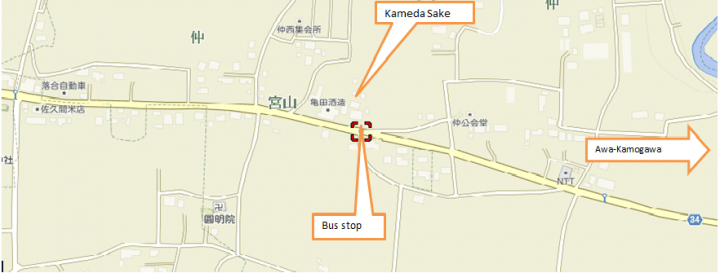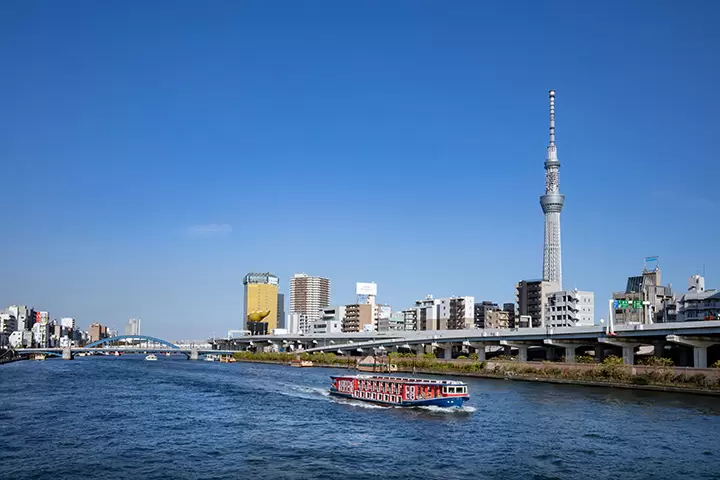Kameda Shuzo - A Sake Brewery Diversifying For The Future (Part 2)

Kameda Shuzo is a sake brewery in Kamogawa, Chiba prefecture. This article introduces the sake brands that made Kameda Brewery famous, as well as other appealing points of this well-established facility.
Kameda produces a wide variety of local sake based on the quality of rice, which depends on the percent that the rice is polished, the degree of filtration and the koji (mold) used. The koji, a mold known as aspergillus oryzae, converts rice starches to sugar which in turn are converted by yeast to alcohol.
Koji rice is at the core of the brewing process. If you are interested in learning more on the sake brewing process, we recommend you take part in a sake brewery tour. Kameda Shuzo also offers such tours (see information at the bottom of the article).

Kameda brewmaster Arai points out the brownish sugidama indicating that a sake batch has matured
Overseeing the whole brewing process is the brewmaster or toji. Mr. Kazuhiro Arai is Kameda’s toji. While there numerous toji associations throughout Japan providing training, Mr. Arai learned his trade in-house.
Beside koji, two other critical factors in sake brewing are the rice and water used. Kameda uses water from nearby Mineoka mountain district. According to President Kameda, the water is very soft and a direct water line was constructed in 1959 to feed the plant. Previously, water had to be transported by hand or horse and later by truck to the plant.

Special room for producing koji rice to be added to the rice mash (moromi) for fermentation.
Kameda uses some the highest quality rice for production such as Yamada Nishiki, Aiyama, and Koshihikari.
Kameda’s Key to Success – Diversification
Kameda recognizes the need to diversify beyond just being a sake brewer. With the less expensive shochu brands increasing in popularity, Kameda began producing its own brand of shochu "Honkaku Shochu Teppatsu" using sakekasu (sake lees) and rice bran. Kameda also diversified into producing a wide range of fruit liqueurs using locally growth fruit such as plum, strawberry, lemon, and biwa (loquat, yellow pear-shaped fruit).
Kameda’s company motto “Kigyo wa hito nari” (literally “the company is its people”) places emphasis on the importance of company employees. President Kameda also emphasized that they constantly reevaluate what will be produced based on sales and drop the least profitable brands.
Popular Kameda Sake Brands
The jizake produced by Kameda cover a diverse assortment of Daiginjoshu (premium sake made with high quality polished rice), Ginjoshu (sake made with high quality, polished rice), Junmaishu (sake made with polished rice), a variety of fruit liqueur and shochu. Some of their most popular brands are shown below.
Kameda has the distinction of having their Daiginjo sake selected by Japan Airlines (JAL) for their first class lounge at Narita Airport. Remember a simple rule of thumb: the more highly polished the rice, the higher quality and more expensive the sake (*3). Also, to appreciate sake it should be served at temperatures between 8-10 degrees centigrade.
The following is a brief explanation of the basic grades of sake mentioned above:
-
• Daiginjoshu: The rice is polished to at least 50 percent; made with rice, koji rice, water and brewer’s alcohol.
• Ginjoshu: The rice is polished to 60 percent (more 40% of the outer layer is removed); made with rice, koji rice, water and brewer’s alcohol.
• Junmaishu: Is made only with rice, koji rice and water.
*3... Rice polishing or milling is the degree to which the outer portion of the rice has been removed. The rice for eating has only about 10 percent of the outer shell milled. Depending on the sake being brewed, 20-60 percent is milled. The milled portion is reused for making Japanese pickles, while the milled portion of higher grade rice is used in making Japanese sweets or cakes and in some cases for cosmetic purposes.
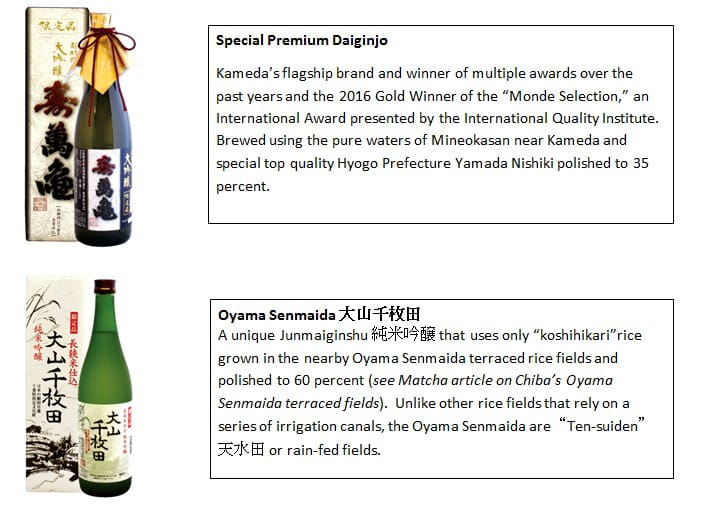
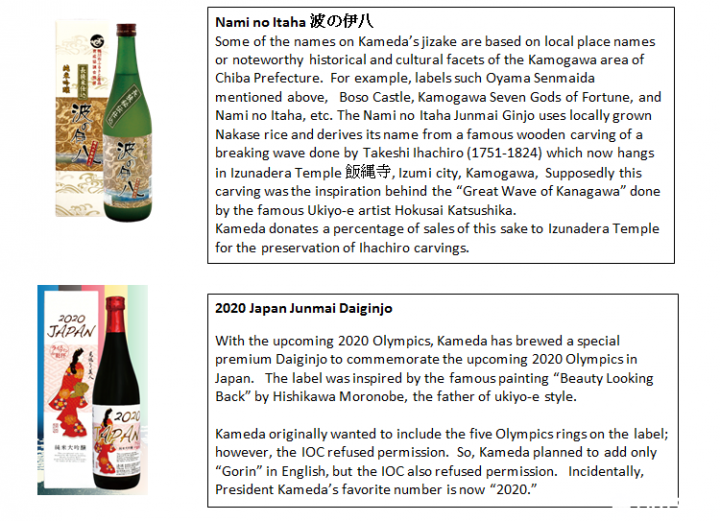

Kameda’s highest priced Junmai sake - Jumangame
Brewed in 1976, this well-aged Junmaishu is Kameda’s highest priced 720 ml bottle at 92,593 Yen. While common tradition says sake is best drunk as soon as it matures, Kameda’s toji said: "That is correct; however, this 40 year old sake with a brownish hue and pleasant smoky aroma is a gem and tastes even better warmed."
The image below is a short tutorial on deciphering sake labels.
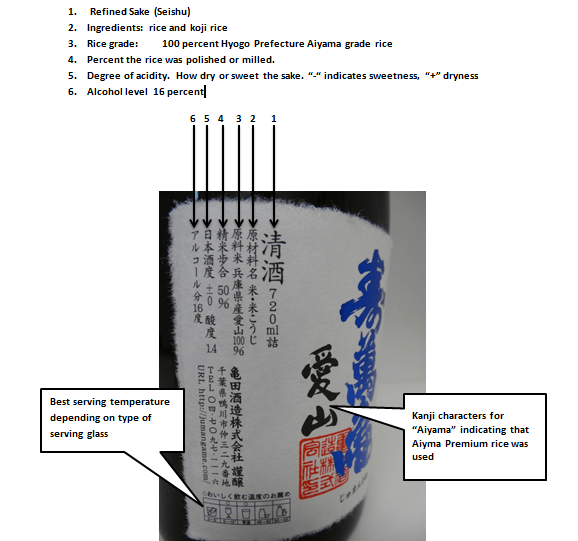
Sakabayashi - The Sign of Newly Brewed and Mature Sake
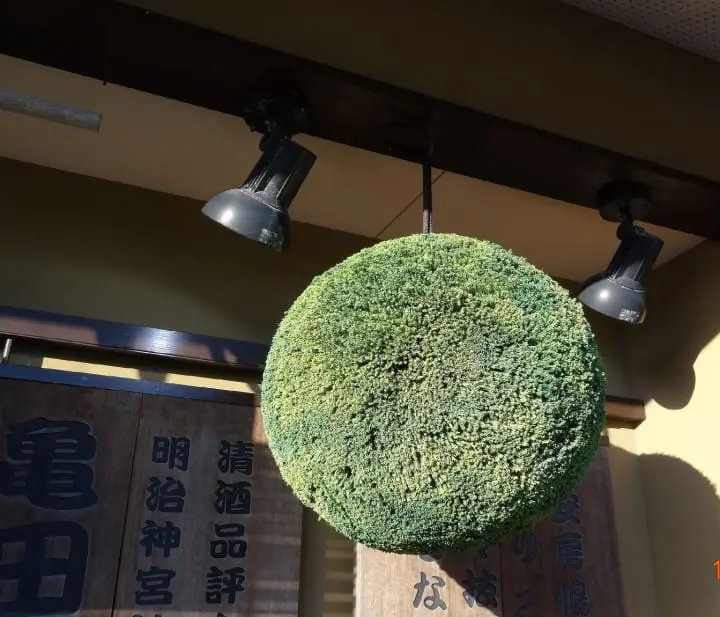
A newly created sugidama is immediately hung outside the brewery to symbolize that the first sake of the year has been brewed.
Following the completion of brewing the season’s new sake, a sakabayashi, more commonly known as “sugidama”, is created. The sugidama made of cedar leaves and branches is shaped by a master certified in creating sugidama. The fresh green cedar heralds the year’s newly brewed sake. Over the following 5-6 months the cedar leaves gradually dry and fad to a light brown which signifies that the new sake has matured and is ready for bottling and drinking.
A Tour of the Kameda Brewing Plant
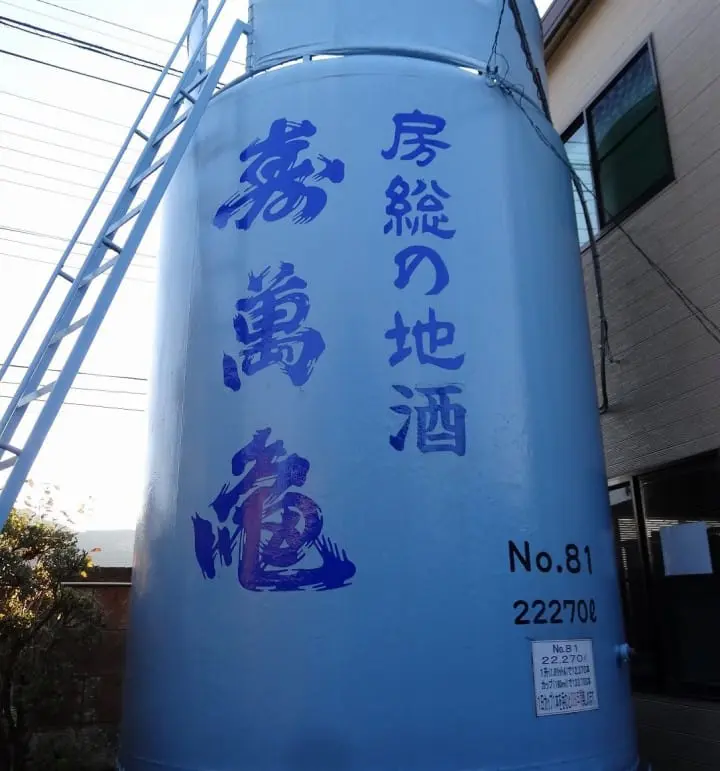
At the entrance to the brewing plant stands the former storage tank inscribed with Kameda’s most praised sake brand “Jumangame”. This tank held the equivalent of 12,370 1.8 liter bottles.
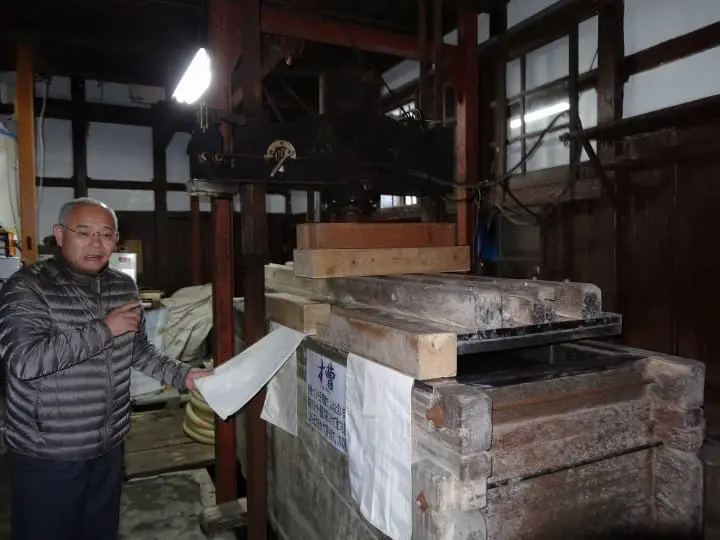
This 150 year-old fune (a vessel for pressing rice) has been used up until 40 years ago to press the rice mash to extract sake.
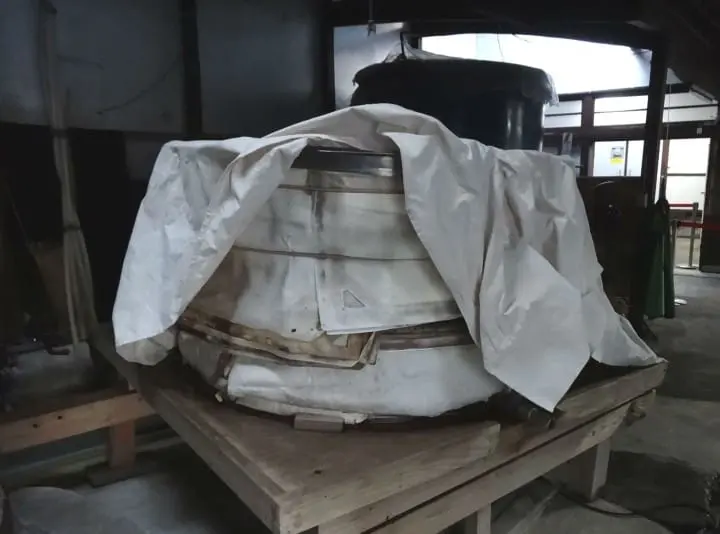
This is a rice steaming machine called “Jomaiki”.
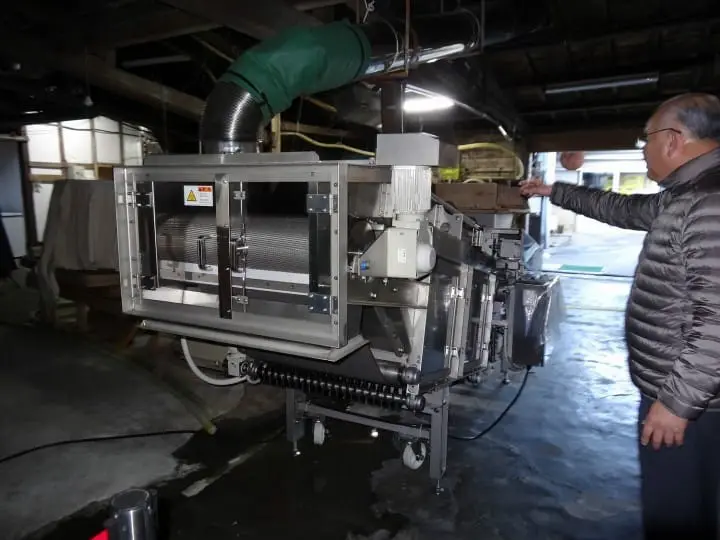
This is a stainless steel cooling machine to cool steamed rice.
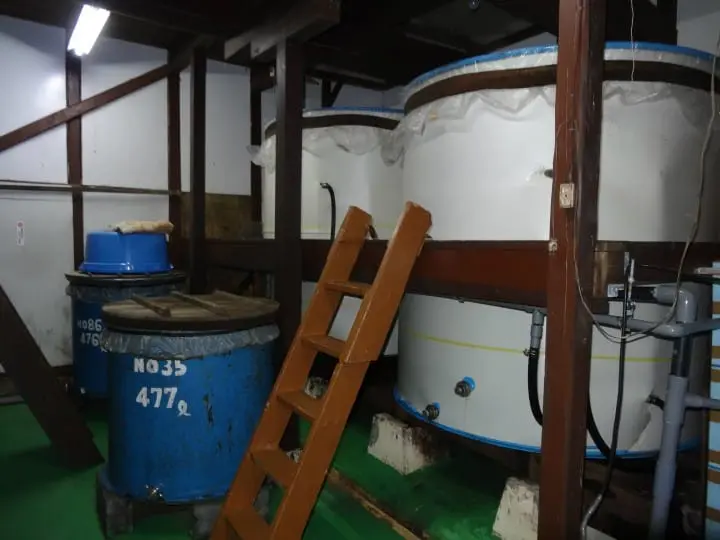
These refrigerated storage tanks allow for brewing sake throughout the year.
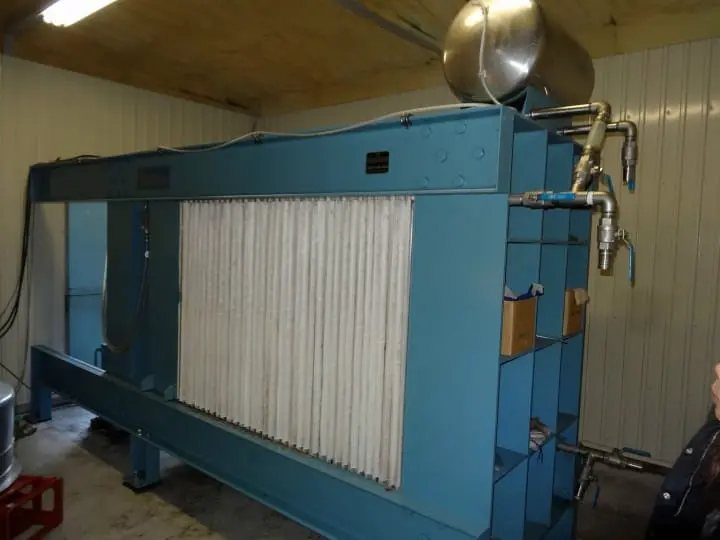
This bellows-type compressor filters the unrefined sake into refined sake and sake lees (sakekasu).
The Kikizake (Sake Tasting) Corner: Enjoy a Wide Variety of Kameda Sake
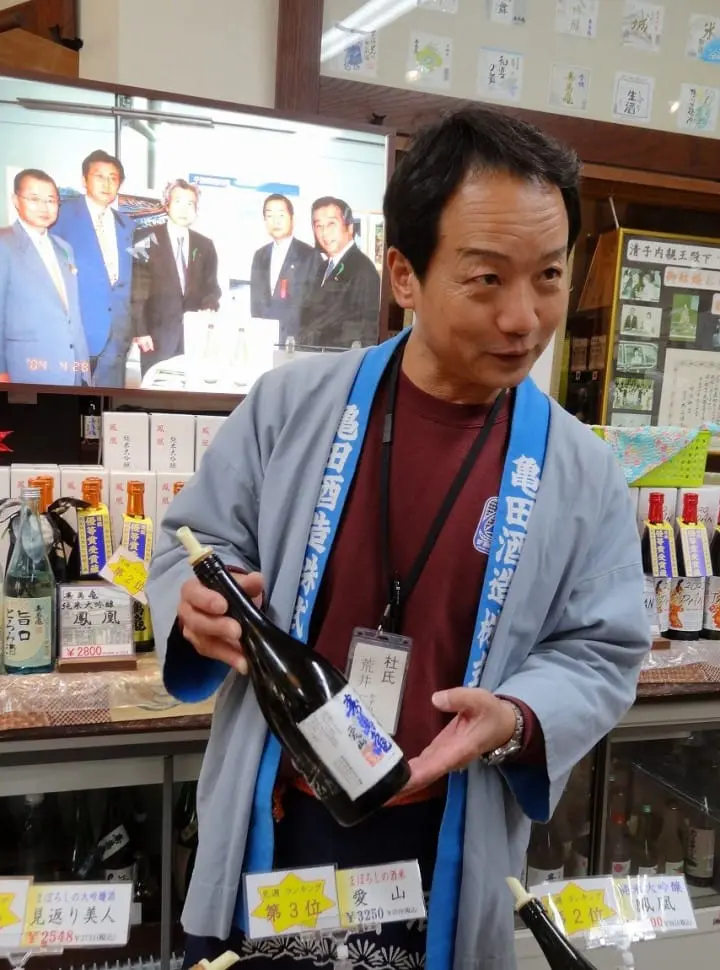
At the Sake Tasting Corner in Kameda Brewery visitors can encounter brewmaster Arai serving samples of Kameda’s five most popular brands. One can learning from Mr. Arai on differences between various sake types.

Professional sake connoisseurs use a special choko (sake cup) called hebime ("snake eyes"). Hebime cups have blue concentric circles for judging the color of sake.
The Shopping Corner
Besides sake, fruit liqueur, and shochu, there’s a wide assortment of Japanese confections using Kameda sake and only sold here such as "Jizake Dorayaki" (а sweet which consists of two small pancake-like patties made from castella wrapped around a filling of sweet azuki red bean paste) or the "Gozakesama" - fresh cream daifuku (*4) with Daiginjo syrup added.
*4... Daifuku is a small round glutinous rice cake stuffed with sweetened red bean paste made from azuki beans.
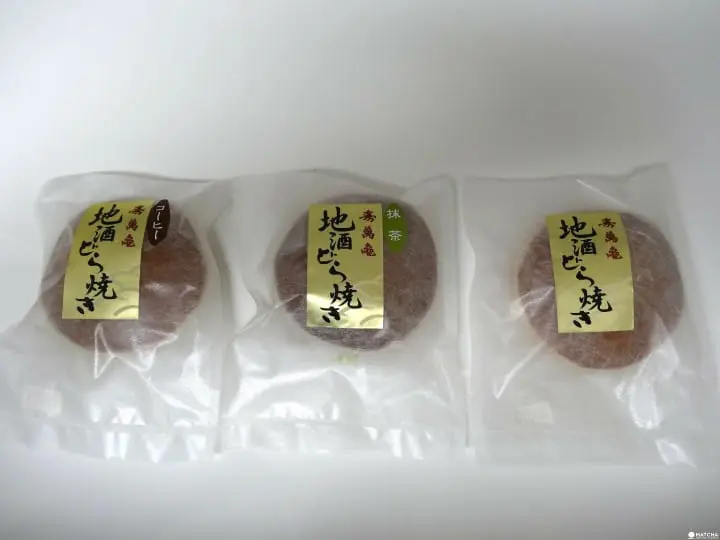
Assorted Dorayaki: coffee, matcha (powered tea) and sake flavors.
There are of course many types of Kameda sake to choose from.

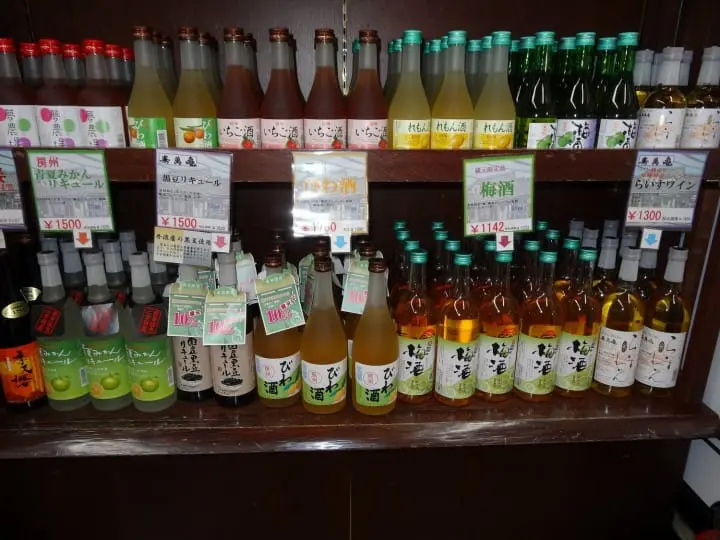
A great assortment of fruit liqueurs made with locally produced fruit.
Cosmetics Made by Kameda Shuzo

Kameda’s natural sake soap
Kameda produces several cosmetic items, soaps, and shampoo used by a number of Chiba hotels. The products use sakekasu (sake sediments) as the base ingredient. Sakekasu is the remaining solids left after pressing and filtering the fermented sake.
Sakekasu is not only well-known for its cosmetic qualities but is also used in cooking. Many persons purchase bags of raw sakekasu to use in their bath.
The Lawrence Huff Gallery
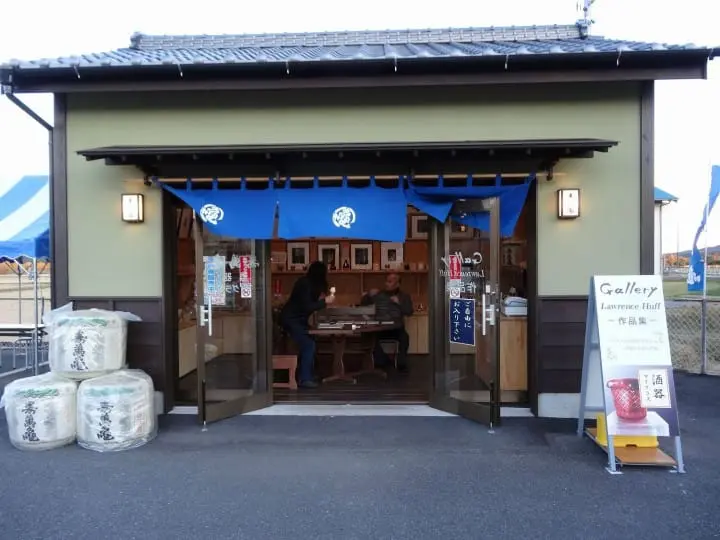
The Lawrence Huff Gallery, named after a local artist, exhibits his photos and also sells a wide variety of glass crystal and pottery.
Daiginjo Soft Cream – The Greatest Soft Cream in Japan!
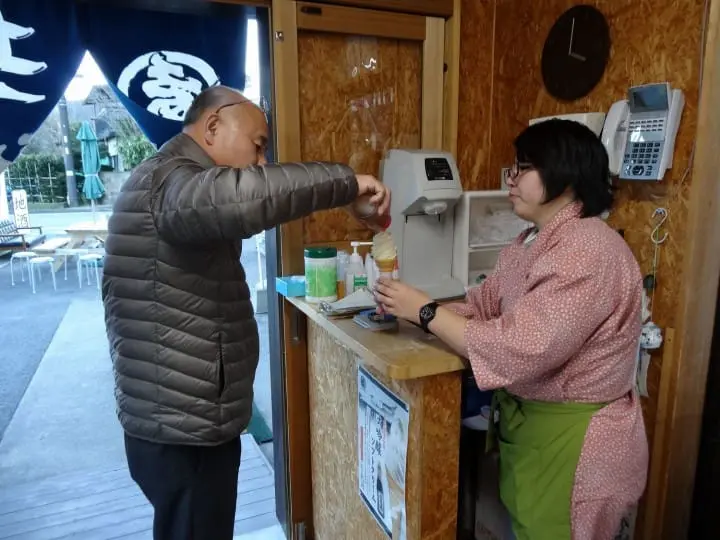
President Kameda serving up the best soft cream in Japan
Even if you don’t purchase any of the excellent jizake or other products, definitely do not miss the opportunity to taste the most delicious soft cream in Japan!
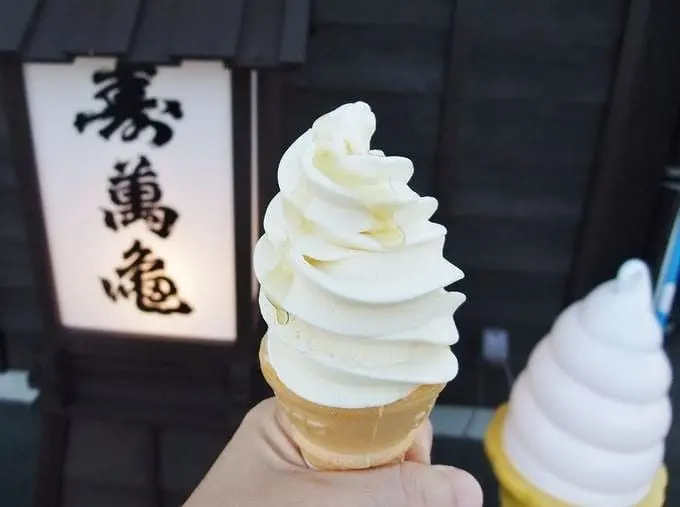
Using 100% Hokkaido produced cream combined with syrup created from Kameda’s Daiginjo Jumangame, this vanilla soft cream is outstanding and, don’t worry, its non-alcoholic!
Lastly, Schedule Your Brewery Tour!
Tours are conducted every day at 11:00 and 15:00. It is necessary to call beforehand and arrange for a brewery tour. No tours are conducted between December 20th and January 7th.
Enjoy your time at Kameda Sake Brewery!
Access:
• 15 Minutes by Bus from JR Awa-Kamogawa Station. Take the bus bound for Hiratsuka-Hongo and get off at the Nakamura Bus Stop.
• 15 Minutes by Bus from JR Awa-Kamogawa Station. Take the bus bound for Kisarazu Station. Get off at the Nagasachu-mae Bus Stop.
• 15 Minutes by taxi from JR Awa-Kamogawa Station.
